Buddleya: varieties and features of cultivation
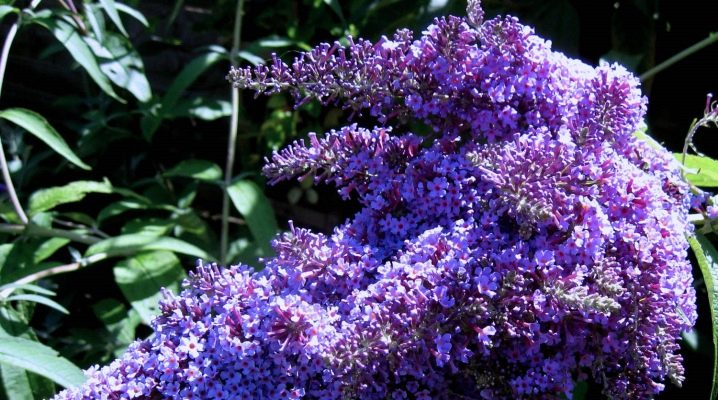
The name "buddleya" is not widely known, although in fact it hides the familiar "summer lilac" - a beautiful fragrant bush that many gardeners love for its colorful flowers, sweet smell and ability to attract bees, butterflies and other pollinators.
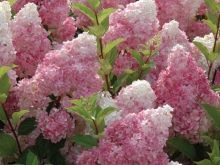
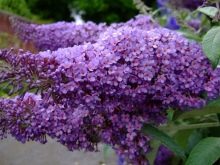

Description
The shrub is widespread not only in the south of our country, it grows throughout North America and is there at the same time a curse and a blessing. This is because buddleya multiplies very quickly, filling everything around thanks to the seeds. Over time, breeders managed to get several non-invasive hybrids of this plant.
The South American variety was introduced in 1774, and then the name "Buddleya David" appeared. This beautiful, fast-growing semi-evergreen perennial shrub usually grows several meters tall. Its crown is open vaulted. The young stems of the plant are fluffy, and the leaves of some varieties have an attractive velvety texture.
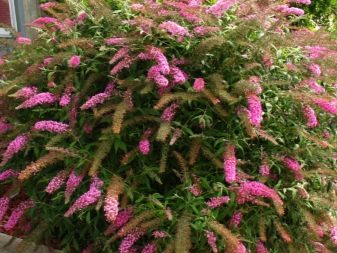
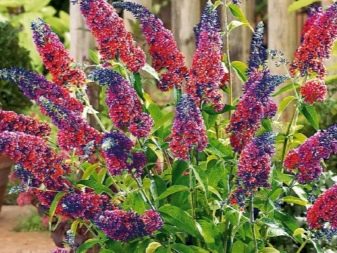
The size, shape and shade of foliage varies greatly from one species to another, ranging from 7 to 12 centimeters in length. The color can be either dark green or grayish green, sometimes light silver. Different varieties and flowers differ in color, there are:
- bright white;
- creamy yellow;
- pink;
- red;
- blue;
- lilac;
- dark purple.
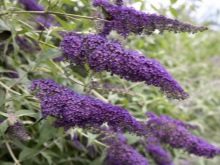
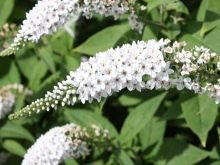
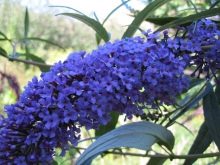
The bushes bloom profusely in early summer and autumn and attract birds and butterflies, including Monarch, with their scent. The flowers resemble long thorns, gathered in small groups.
Buddleya grows vigorously in any type of soil regardless of the pH level and can withstand all weather conditions. The shrub loves the sun and loose soil, but is winter-hardy, which is why it is so widespread throughout our country. This is one of the first plants to bloom and delight with its aroma after a cold winter.
"Buddleya David" survives even where it is very cold, hibernates without mulch, although gardeners advise planting it in places protected from northern winds and cold. Unrestrained growth makes buddley undesirable in some areas.
Many countries have listed buddlei as an invasive species that should not be cultivated, but pruning can keep the plant in check.
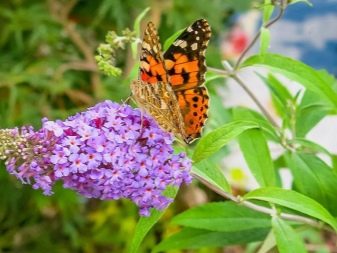
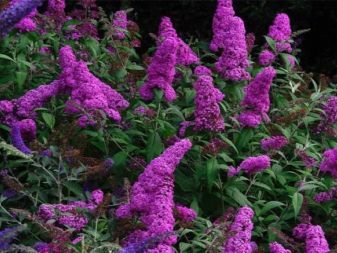
If the flowers are allowed to turn into seeds, they will be blown away quickly and in great numbers by the wind. They can fly for kilometers and fall into the water to travel even further away from the parent plant. When the seeds enter the soil, 80% of them germinate very quickly. Most of these shrubs will be able to produce new seeds in the first year, hence the uncontrolled reproduction of the shrub.
Buddleya also propagates easily from cuttings and from roots, so when it takes root along the water, it can easily become a natural flood protection. Due to the nature of the plant, it is very difficult to restrain its growth. When seeds do not germinate immediately, they can remain viable for 3-5 years. If you cut down one tree, the roots are activated and soon a whole forest will appear in this place. It will not help, even if you remove the central ones, since new trees can also appear from the side shoots.
The plant can withstand poor soil, drought and much more, so it can be assumed that it is good for them to plant barren areas where nothing else grows, but buddleya captures the territory completely and completely and prevents other species from developing. This leaves less food and less habitat for birds, insects and other inhabitants of the planet.
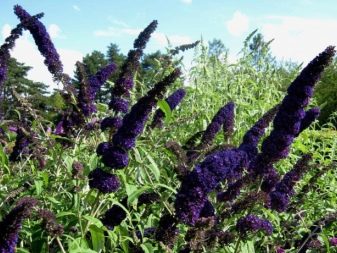
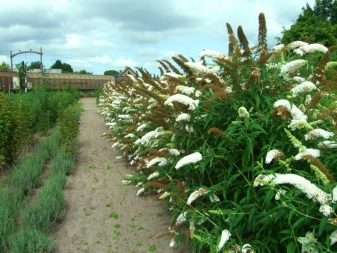
There are several ways in which you can control the growth of a shrub.
- Seed control. Flowers should not be allowed to ripen to seed by pruning them earlier.
- Seedling control. The emerging shoots do not need to be cut, but simply mowed. This will not kill them, but it will keep them from growing further. Sprinkling the soil around with heavy mulch will make it difficult for young shrubs to break through.
- Use goats. Goats eat seedlings and saplings of "summer lilac". As soon as they appear, they will then hold back the spread of buddleya.
- Application of herbicides. Products such as Roundup can be used to control the plant. Spray the agent on the seedlings as on any weed. To get rid of a mature plant, cut it at the root, then smear the surface of the stump with "Roundup".
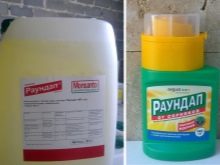
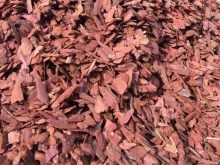

Types and varieties
You will have to choose a bush for landscape decoration among many attractive options. There are also a large number of hybrids and related species. Among the most popular varieties among gardeners are the following.
- Black Knight. The shrub is wide, with spreading branches. It can be up to 2 meters high and up to 1.5 meters wide. The color of the flowers can be either purple or dark purple.
- Nano Blue. This species is characterized by abundant flowering, which lasts from late July to September. The flowers are bright, purple, and an incredible aroma emanates from the bush.
- Royal Red. Demonstrates a rich red-violet hue during the flowering period. It blooms from mid-summer and fades in October.
- Empire Blue. The alternate-leaved plant is popular for its very bright purple-blue color.
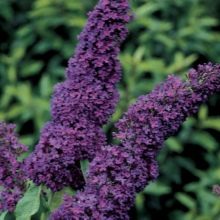

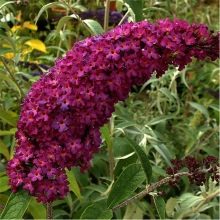
- Flower Power. The variety can not fail to please with an orange-violet shade of flowers.
- Pink Delight. This species is considered one of the most beautiful because of its delicate pink flowers.
- "Black night". Has inflorescences of a deep dark purple hue. It is the most readily available variety and has the darkest flowers.
- Guinevere. Shows very fragrant lilac-black flowers in combination with blue-green leaves during the flowering period.
- "Pink delight". This alternate-leaved buddleya produces large inflorescences of a pure pink tone. Leaves are silvery.
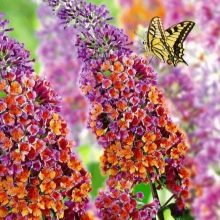
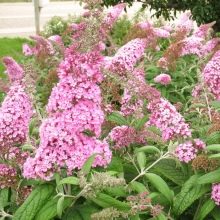

- Royal Red. The flowering shade is deep burgundy.
- "Attraction". This bush adorns the garden with dark red flowers during flowering.
- Dartmoor. It has very large clusters of lilac flowers.
- "White Ball". A dwarf species with white flowers that delight all summer.
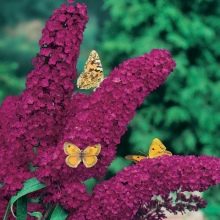
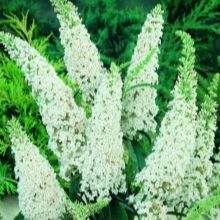
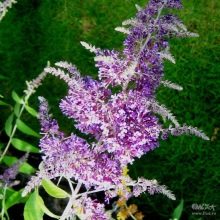
Landing
Regardless of the climatic conditions, summer lilacs will always grow well on the site and will delight with their flowering. The only thing that can kill this hardy deciduous shrub is damp soil and lack of sun. The soil should be loose, well-drained, and the planting site should be illuminated by sunlight most of the day. Buddleya prefers a pH of 6.0-7.0, but this level is not essential for healthy growth and development of the bush.
The plant requires virtually no fertilization. Can survive in arid areas or where frost is frequent. In the coldest climates, the shrub completely freezes to the ground, and with the onset of spring, it quickly revives and pleases with new shoots and even more flowers than before.

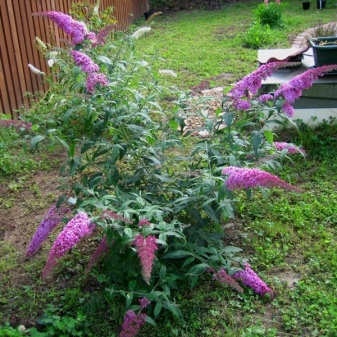
This plant does not require too much attention to keep it in good shape. Below are the basics of growing buddlea in the garden.
- Plants grow best when planted in late fall or early spring.
- Bushes require space.Most species measure several meters in height and width. You should always give the plant an extra free area around it.
- It is better to choose a site for planting where the first part of the day is the sun, and the second - the shade, or vice versa.
- Good compost is sufficient for planting.
- The root head should be at the same level as the soil surface.
- The gardener must always observe a minimum distance of three meters between the bushes, otherwise they will begin to displace each other.
- After planting, it is required to thoroughly water the bush.

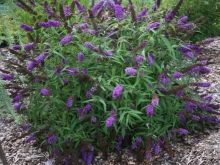

Breeders have developed dwarf buddlei varieties, which are widely used in landscape design. They are suitable for growing in containers. In appearance, such plants resemble small trees with a very beautiful and long-flowering crown. When landing in containers, the following requirements should be observed.
- Choose a pot large enough to hold the grown plant and accommodate its root system. It is worth making sure that the container has a good drainage system, as summer lilacs will not grow in permanently damp soil.
- Use any potting soil recommended for container planting.
- When placing a buddleya in a pot, its root collar should be at the level of the soil.
- The plant will need to be watered well, but not poured.
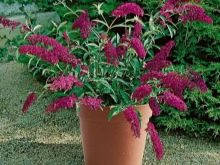
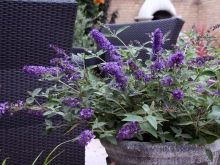

Care
Cultivation of buddleya is possible with equal success both in the Moscow region, in Siberia, in the Urals, and in the Leningrad region. The process always looks the same regardless of the climate zone. The described fast-growing flowering bushes with beautiful flower thorns do not need regular care, but the gardener will have to follow several rules.
- Fertilize the plant before wintering.
- Remove flowers before they turn into seeds.
- Maintain budlea shape and size, trimming edges to avoid overgrowth.
- Caterpillars eat the leaves of this bush, which may affect the loss of the latter's visual appeal. If the influence of insects is minimal and does not harm the plant, nothing can be done, otherwise the bushes are sprayed with special agents.
- Watering should be done regularly, but infrequently.
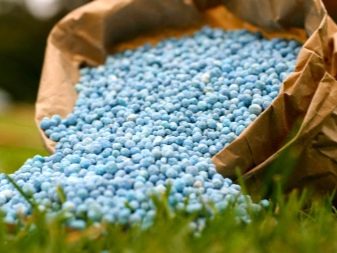
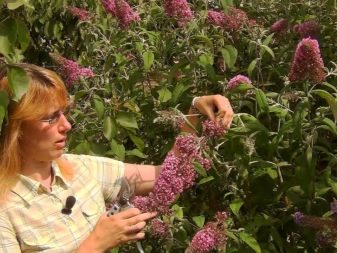
- Too much fertilizer should be avoided as it promotes the growth of leaves rather than flowers.
- No need to try to transplant a bush from one part of the garden to another. These plants do not do well with transplanting, but real thickets will appear in the old place.
- You should always control the emergence of root seedlings to make sure buddleya does not start spreading like a weed in the area. If necessary, prune them, but do not cut or dig them out, damaging the roots.
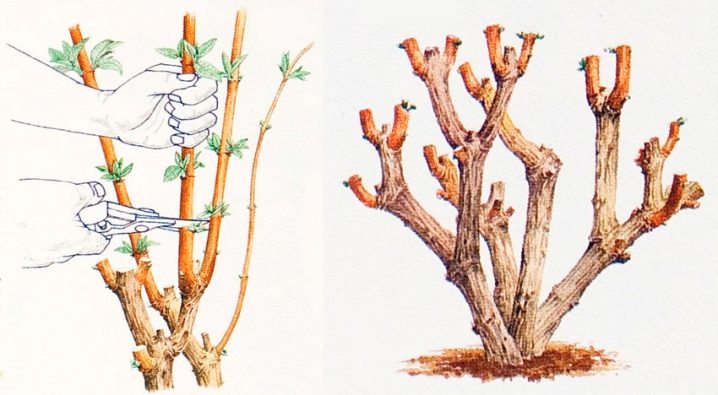
These hardy, adaptable shrubs are not susceptible to diseases and pests. It has already been said about caterpillars, but they are more an element of the nutrition system and interaction between different organisms than pests. But on sandy soils, buddley, regardless of the variety, can be tormented by nematodes. In marshy conditions, root rot develops, which kills the bushes. When an extreme drought strikes, the "summer lilac" attracts spider mites.
In cool climates with long rainy periods and constant damp conditions, mold can develop. To combat root rot, it is necessary to change the soil, add sawdust, sand, vermiculite to facilitate and improve air circulation. If the climate is dry, then you can use the mulch after watering, as it perfectly retains moisture in the upper layers and does not allow it to evaporate quickly.
It is precisely because buddleya attracts many beneficial insects that it is important to use natural remedies to combat the problem. Neem oil is one option that helps fight a wide range of pests and diseases in the garden.
Pruning to the ground is another possible solution to the problem.The plant will not die, by the next season it will quickly recover, it will bloom profusely. Removal of diseased branches should be done in spring or summer.
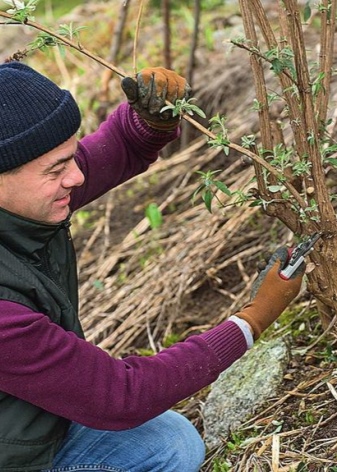

Pruning
The bushes of the described flowering plant require rare care, but pruning in early spring is always beneficial. It does not allow the buddley to become too tall, lose its attractive shape, thereby preserving the compactness of the bush and its attractive appearance. If you want more flowers next year, then you should cut off the old branches.
The procedure is not difficult, since it is impossible to kill the plant by excessively removing shoots, on the contrary, then even more of them will appear. It is worth starting pruning in March, as soon as the worst frosts are over. Dead, diseased, damaged or weak rods are removed first. The rest will only need to be cut to length to form an even frame. In subsequent years, you can simply reduce the growth of branches from the previous season by removing up to 2 pairs of buds.
The gardener is required to monitor the quality and cleanliness of the tool. Pruners, hacksaws for wood must be not only sharp, but also disinfected. To keep the plant healthy for the next season, it is important to shorten it to 0.6m in height, leaving two or three buds above the base.

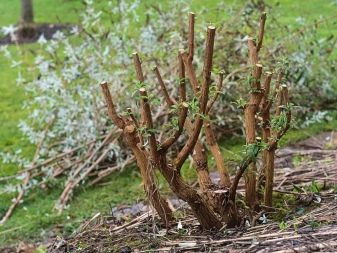
Late winter or early spring is the best time for this procedure. Although such a strong pruning may seem radical, it actually carries a special meaning for the buddleya. It must be remembered that, like with acacia, unrestrained growth makes the bushes shapeless, ugly. The thickest branches are removed not with pruners, but with special scissors; for working with the crown, there are models with a telescopic handle, which allows you to form a bush without a stepladder.
It is very important to prune the bush correctly. Those varieties that bloom in late summer and fall should receive a tough pruning every spring. Tough pruning means removing shoots from the previous season. Cut them off completely. However, if you want to quickly increase the size of the bushes, the branches are reduced in size, but not completely removed. In the northern regions, winter can lead to the death of growths. The main task of new shoots is to bloom that same summer. This is the case with most varieties, but there are exceptions.
There is a type of buddleya that loses leaves and produces flowers on old branches. Colvillei is evergreen or semi-evergreen, producing flowers on shoots from the previous season. For this reason, flower buds need to be preserved and pruned until the end of the flowering season, which is June. This pruning is slightly different, since thin and old branches are removed, long shoots are shortened. After 5 or 6 years, the bushes look tall and unattractive. They should be pruned in early April.
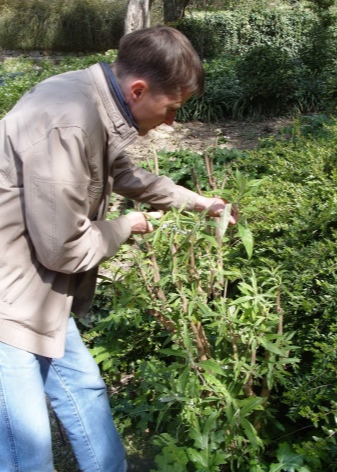
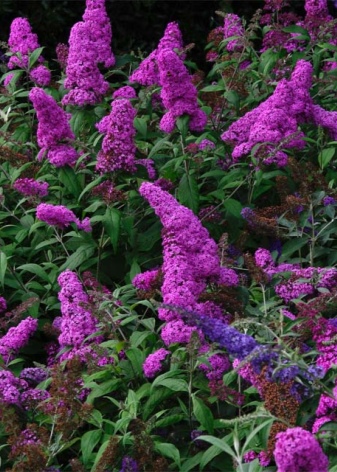
Preparing for winter
Despite the fact that the shrub is resistant to cold weather, most gardeners agree that the plant should be sheltered in the fall. Shelter is done after pruning and after the buddleya has fallen asleep. If the branches are wet, they will begin to rot under the material, which will lead to death.
In the question of how to prepare one-year-old bushes, it is better to use a denser material or more of it. You can cover them with an old blanket, but some gardeners do it even easier - they dig up a plant with a root system and transfer it to the basement for storage until spring.
In order not to purchase specially material for covering, you can simply use dry soil. A box made of wood is placed on top, and slate is placed on top of it or covered with roofing material, this design will be enough. When the snow falls, it will be possible for them to sprinkle a little shelter. This is how the plant is covered in the northern part of our country.
You can build a small greenhouse around the bush, which requires dry soil and peat.The trunk is covered with the first material, the trunk circle with the second. Arches are placed on top, which will need to be covered with lutrasil.

Reproduction
The buddlea bushes give many shoots around. It is enough to dig up and plant such seedlings, and soon they will take and take shape into an adult plant. Cutting is another method that is also used to propagate the described plant.
Planting material is harvested in the fall, but it is necessary that the bush completely shed flowers. The cuttings are planted in the ground immediately or removed to the basement, garage, to be used later in early spring. You can wait until the shoot gives roots in the container, but this is an extra transplant work, since the buddlea is remarkably adaptable to the created conditions.
It is imperative that the cuttings have at least three buds. Two of them will need to be immersed in the ground. If the cutting is planted in a container, then it can be covered with a film on top until it sprouts.
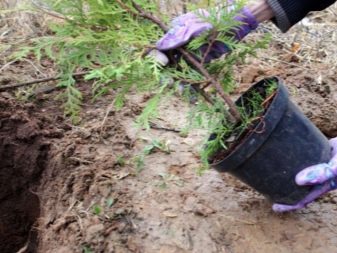
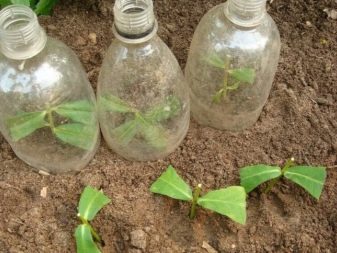
This plant is most easily grown from seed. The most important condition for growth is a well-drained soil. But there shouldn't be a lack of moisture. Seeds germinate well in soil with neutral or slightly acidic pH.
For growing from seeds you will need:
- loam-based compost;
- seeds;
- a small amount of fine sand;
- peat pots.
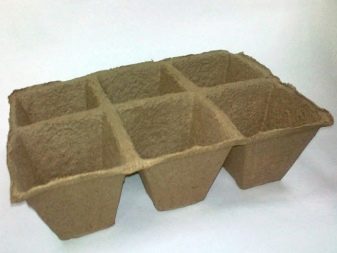
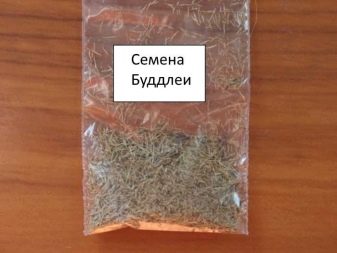
The step-by-step process is as follows.
- Fill the pot with loam compost and let it settle in 2.5 cm of water for 15 minutes. Excess moisture is allowed to drain.
- Mix seeds with sand. You only need half a handful of the breed.
- Sprinkle the surface of the compost with a mixture of sand and seeds, trying to cover it as evenly as possible. Gently press down, but do not cover the planting material with compost.
- Place the pot in a sunny indoor location and spray moisture to keep the surface damp, but not too wet. The seeds should germinate in 3 weeks.
- When four leaves appear on the seedlings, they are transferred to peat pots.
- Young shrubs are planted in late spring or early summer, when there is no more frost. They need well-drained soil, plenty of room to grow, and plenty of sunshine. Dig a landing hole with a depth of at least 15 cm.
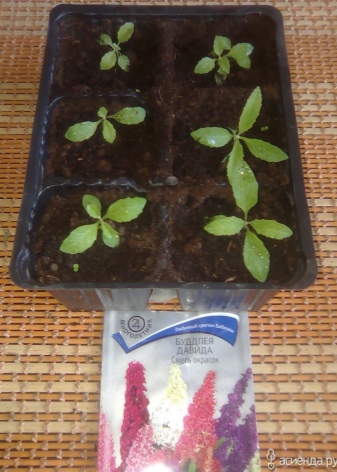
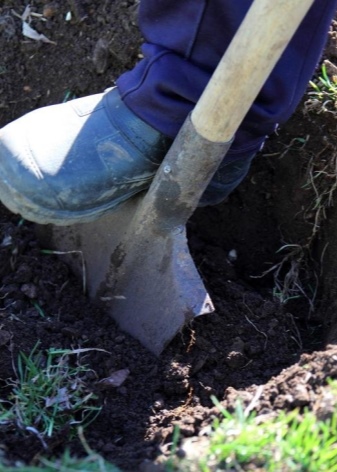
Examples in landscape design
The shrub blooms in abundance in the summer months and early autumn, therefore it is used for landscape design. Trees in the corners of the garden look especially beautiful. Dwarf can be used in large containers in the winter garden, on the veranda, near the recreation area.
The bushes can be given an attractive, rounded shape. Make them a tall, beautiful hedge or backdrop for a natural garden with a wide variety of native plants that can provide habitat for wild flora and fauna.
Buddleya will grow well on curbs, and at the same time will serve as an excellent protection from dust from the side of the road. It looks great when planted in groups of different color varieties. The green lawn goes well with the plant.
Such a sprawling bush can decorate a flowerbed in the center, but it is very important that the design neighbors are much lower than the buddley, then the effect of a falling waterfall of flowers is created.
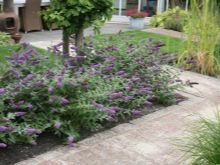
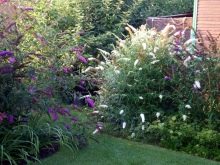
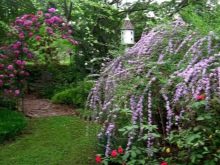
Dwarf species are increasingly used in landscape design, as they look more compact and require less space for growth. They can be planted around the entire perimeter of the garden or decorated with a recreation area. Symmetrically decorated buddlea bushes become one of the main garden decorations from summer to autumn. Designers try to use bright and juicy shades, carefully selecting varieties.
If it is decided to plant a group of several standard-sized bushes, then the distance between them of 2.5 meters will be enough to create a solid wall. The gardener has many options for combining different shades.You can intertwine dark purple flowers with pale pink or use a multicolor variety as the main accent.
With the manifestation of imagination, you can create an amazingly beautiful garden using the described plant as the main accent. The only thing a gardener will have to face is the need to constantly restrain the growth of the shrub, or you can buy varieties that are not invasive. They were the result of the painstaking work of many breeders and made it possible to have a buddley on the site even in those countries where it is prohibited by law.

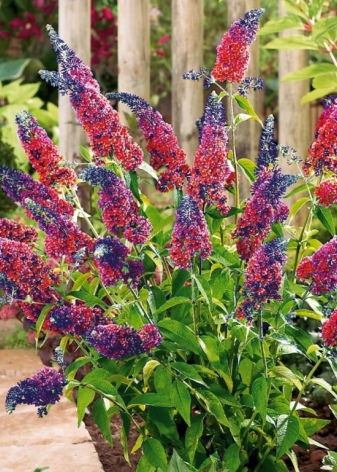
For more on the features of growing buddleya, see the next video.



























































The comment was sent successfully.